ABOUT THE RESEARCH.
I love traveling with the express purpose of doing research. I have a new series starting in Oct. with a Christmas novella and followed up with three books in 2013–January, March and May. I hope to have 3 more following that.
These stories are set in the south west portion of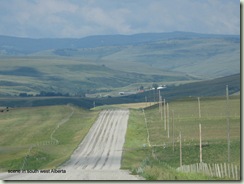 Alberta known for ranching. There are a number of historic ranches still in the area. Doing research, I visited a number of them. The scenery itself is wonderful and the ranches great places to visit.
Alberta known for ranching. There are a number of historic ranches still in the area. Doing research, I visited a number of them. The scenery itself is wonderful and the ranches great places to visit.
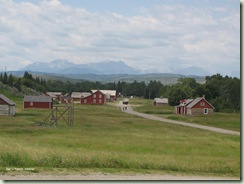 The Bar U Ranch is designated as a national historic site and has a museum-like atmosphere. It began as the North-West Cattle Company and like other early ranches faced many set backs such as falling cattle prices, deadly winters
The Bar U Ranch is designated as a national historic site and has a museum-like atmosphere. It began as the North-West Cattle Company and like other early ranches faced many set backs such as falling cattle prices, deadly winters
William Winder had come the North West in 1873 as a member of the North West Mounted Police, but after he retired he decided to take up ranching. With the help of his father-in-law, Charles Stimson, he convinced Sir Hugh Allan, a highly successful businessman and head of the Allan Steamship Line in Montreal, to set up the North-West Cattle Company in March 1882. Fred Stimson, Winder’s brother-in-law, was appointed manager, and went to Chicago in 1881 to look over and select appropriate bulls coming to market from western ranges. On the trip up to the Highwood River area, a snowstorm hit, but Stimson allowed the cattle to drift south to the Old Man River area, where they could graze. His decision saved the herd.
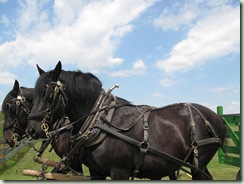 Another wise decision on the part of ranch owners was to invest in horse ranching. Soon the ranch was known everywhere for winning prizes and awards, as well as a reputation for breeding some of the finest horses in the world.
Another wise decision on the part of ranch owners was to invest in horse ranching. Soon the ranch was known everywhere for winning prizes and awards, as well as a reputation for breeding some of the finest horses in the world.
A number of famous and infamous people have been part of the Bar U. John Ware—a big black cowboy who impressed his rivals by riding horses no one else had. Ironically, he died when his horse stepped in a hole and fell on him.
An outlaw—The Sundance Kid, part of the Hole-in-the- Wall Gang in Montana-came to the Bar U to lay low. He worked and signed his real name, Henry Longbaugh.
The book, The Virginian, is modeled after a man called Everett, or Eb Johnson. The author, Owen Whistler, met him in Wyoming. After Eb left Wyoming, he headed for Canada and was hired as foreman of the Bar U.
From the 1880s to 1930s the cowboys got paid a dollar a day plus keep.
Another famous ranch I visited was the OH ranch. 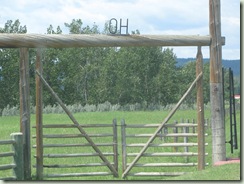 In 1876 Lafaytte French, a buffalo hunter and Indian trader from Pennsylvania, USA, met Orville Hawkins Smith, a mule skinner who drove teams between Salt Lake City and Montana, and the seeds of the OH Ranch were planted.
In 1876 Lafaytte French, a buffalo hunter and Indian trader from Pennsylvania, USA, met Orville Hawkins Smith, a mule skinner who drove teams between Salt Lake City and Montana, and the seeds of the OH Ranch were planted.
In 1878 the two frontiersmen established an Indian trading post at Blackfoot Crossing, only to have it closed by the North West Mounted Police a year later because of the usurious prices charged.  Nonplussed by the event, the two men moved to what is now High River, Alberta and opened the soon-to-be town’s first legitimate business, a stopping house for settlers traveling to their new homesteads.
Nonplussed by the event, the two men moved to what is now High River, Alberta and opened the soon-to-be town’s first legitimate business, a stopping house for settlers traveling to their new homesteads.
In 1881, the two raconteurs bought some cattle and began squatting at what is now the Main Headquarters of the OH Ranch. The two men decided to use Smithy’s initials to brand their cattle. The OH brand was the twenty-fifth cattle brand registered in what was then known as the North West Territories. Perhaps unknown to the two fledgling ranchers, the letters O and H are two of only seven characters which cannot be branded upside down or backwards.
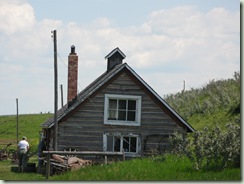 It was interesting to visit these ranches and see some of the original buildings still intact.
It was interesting to visit these ranches and see some of the original buildings still intact.
Research is such fun. And not just for me. My client enjoys it as well


Comments
ABOUT THE RESEARCH. — No Comments
HTML tags allowed in your comment: <a href="" title=""> <abbr title=""> <acronym title=""> <b> <blockquote cite=""> <cite> <code> <del datetime=""> <em> <i> <q cite=""> <s> <strike> <strong>